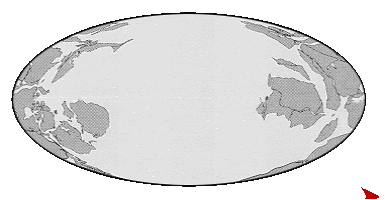We know so little about what this means that it may be helpful to focus on what the gravity geoid is not.
The earth is NOT shaped like a potato. Vertical exaggeration is used on nearly all maps to keep them from being stultifyingly borrrring. The exaggeration on the common “gravity potato” is 7000x. This heroic exaggeration may make great media, but it makes lousy science. The gravity geoid should be thought of as a map of the mass density vectors from the satellite to the earth’s center of gravity.
The gravity map shows NO consistent signal for tectonic features. The map is opaque to ocean spreading centers, to the distinction between ocean and continental crust, to subduction zones, and to major collisional features. Even 30,000 feet of Tethian sediments piled up in the Himalayas brings only gravity equal to North America, which sits in a hole itself.
OK, so is there anything we can say about magnetism and gravity holes? Not really. It seems that mass can either foster or inhibit magnetism depending on the electrical properties of the mass. Perhaps the potato is just the distribution of Iron in the core.
It is really tempting to look at gravity holes as “bullet holes” from impacts (see how media affects us?), but the “bullets” must surely remain imbedded. Would they increase or decrease the mass density?






